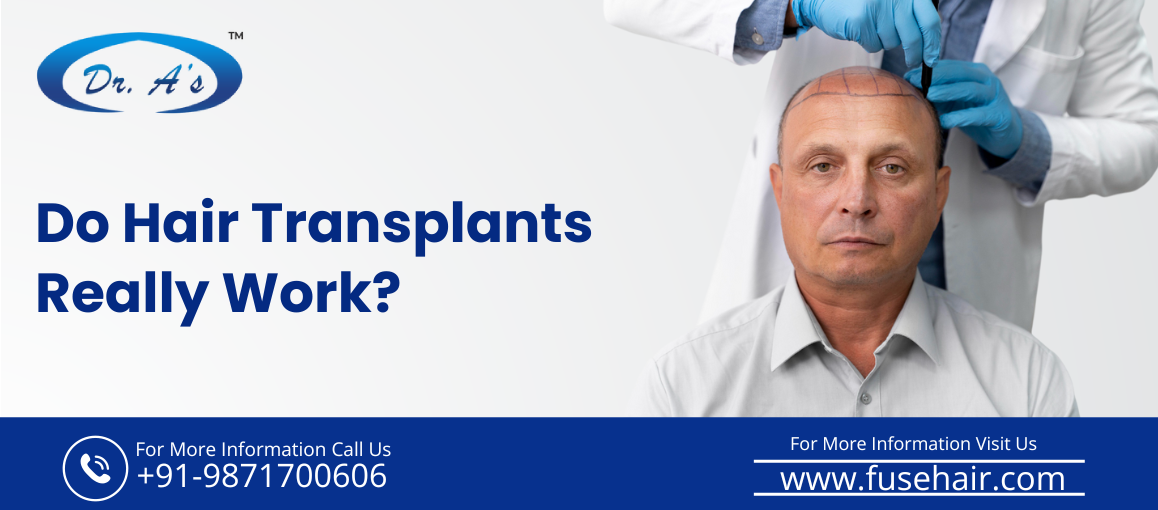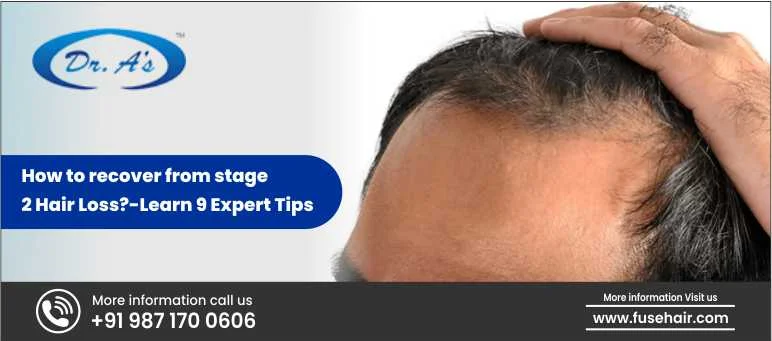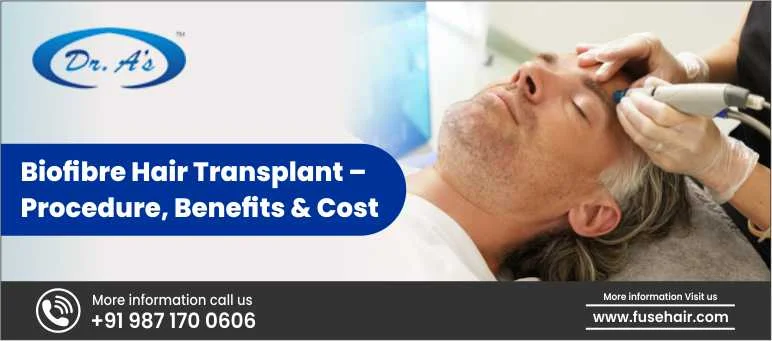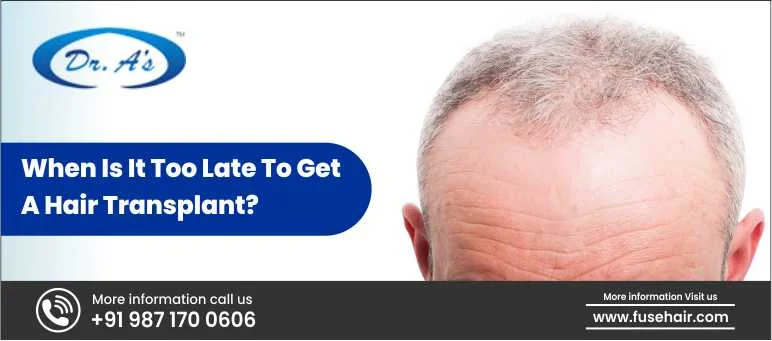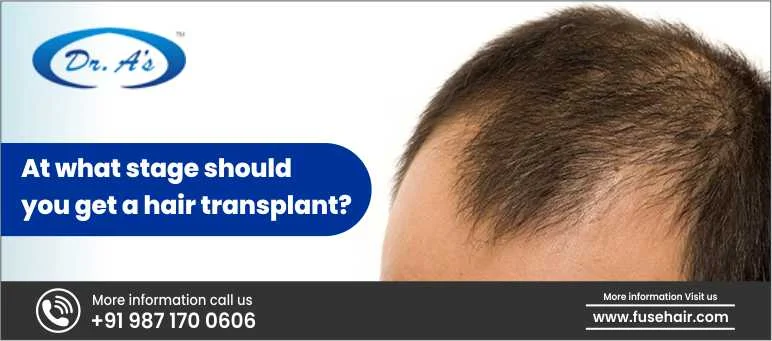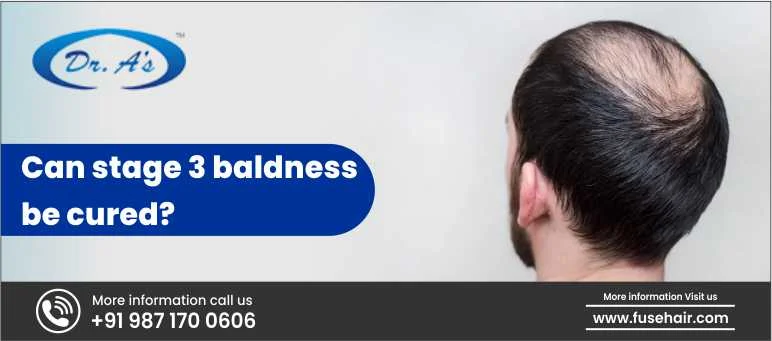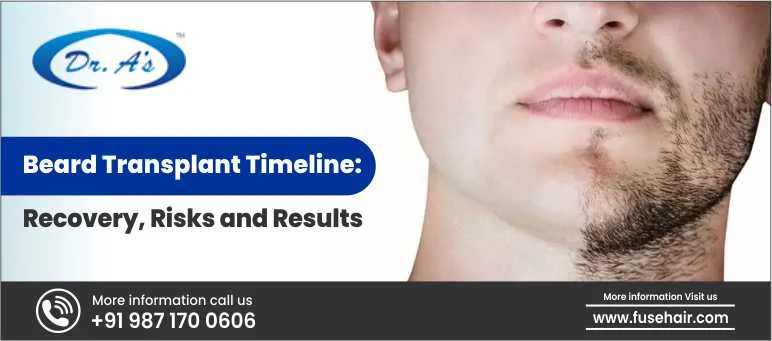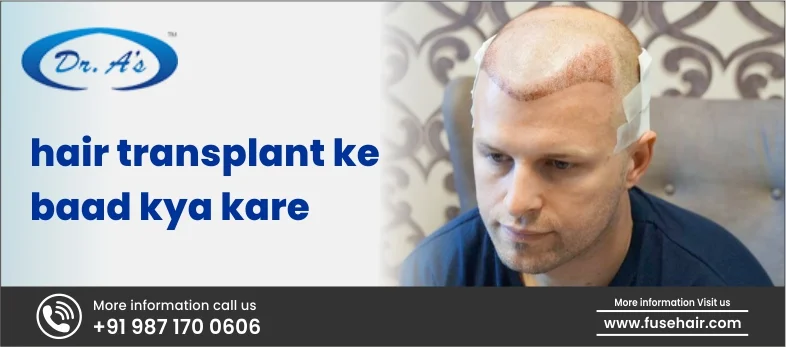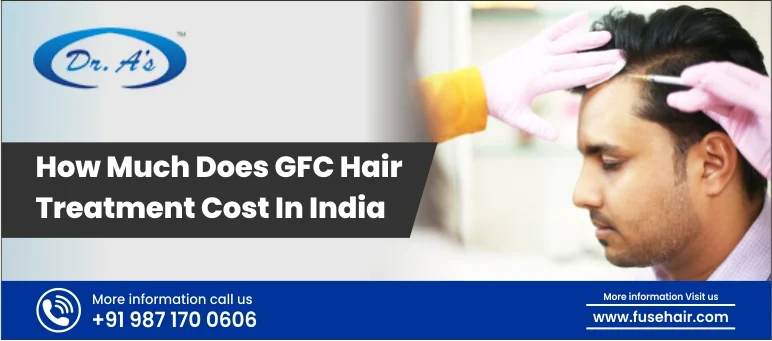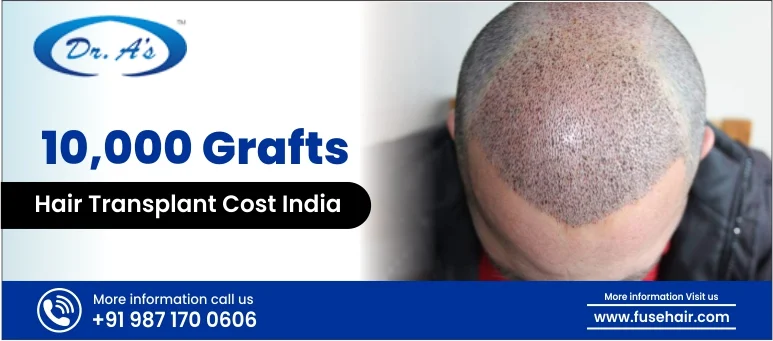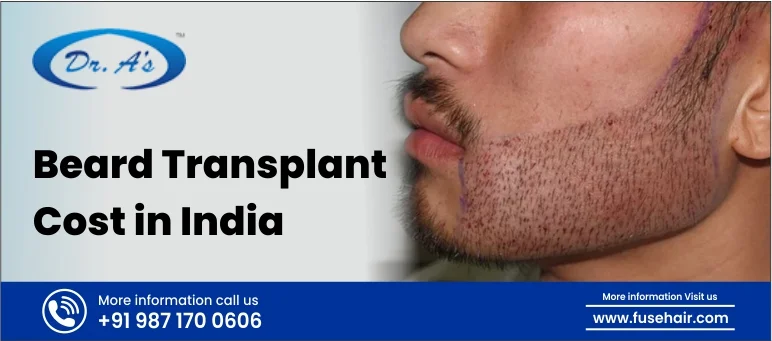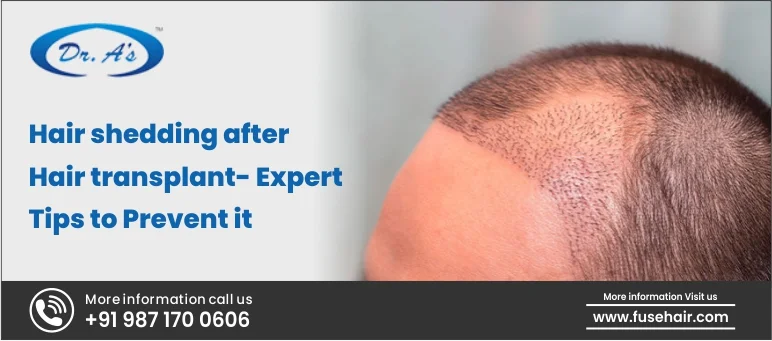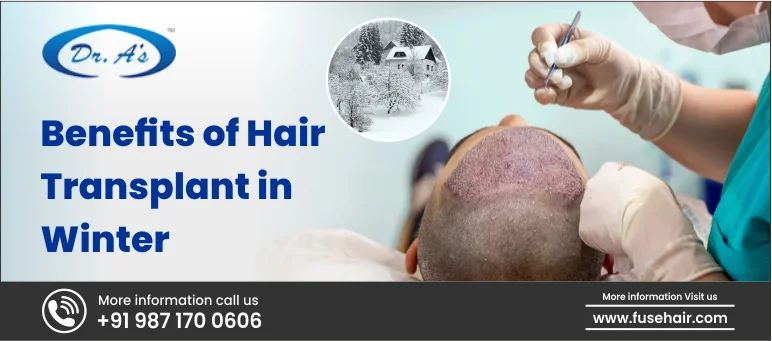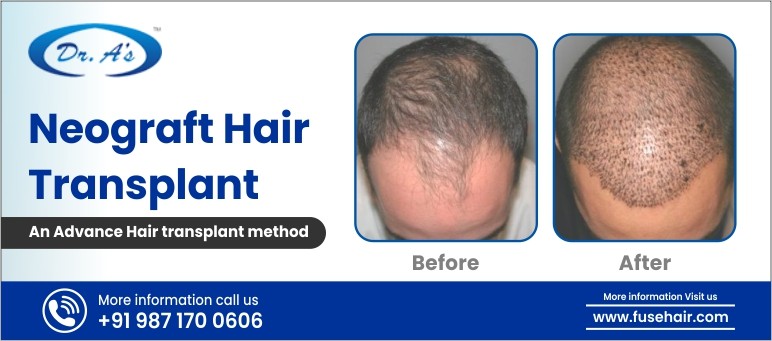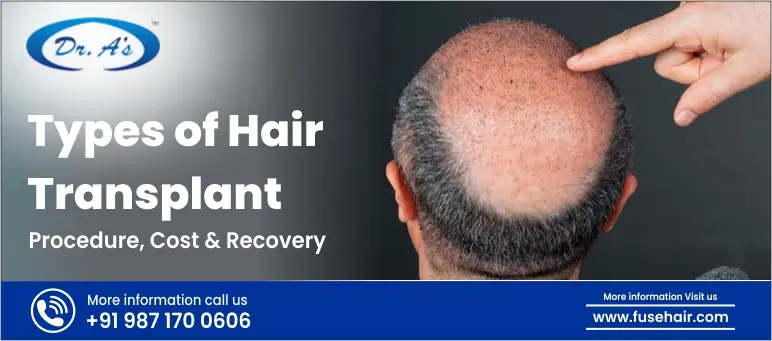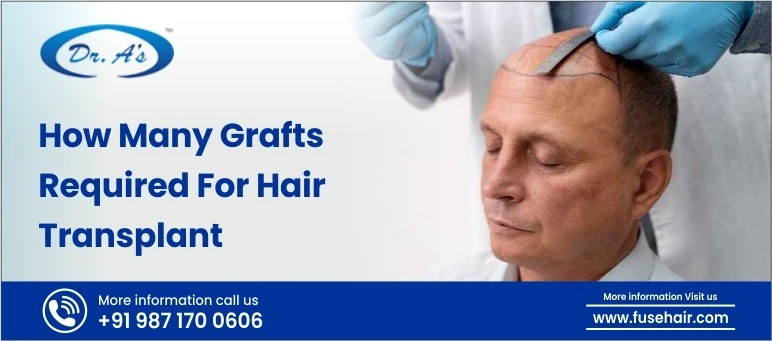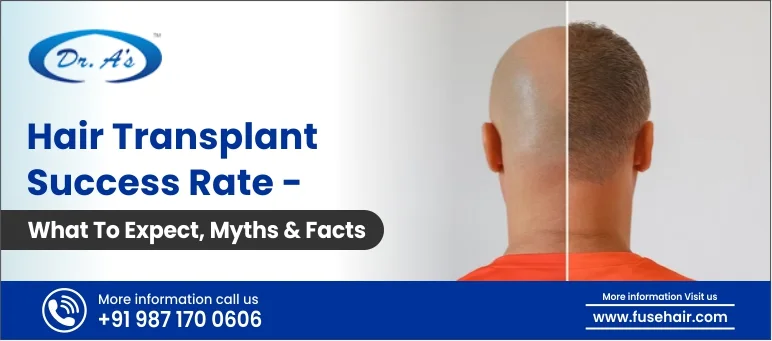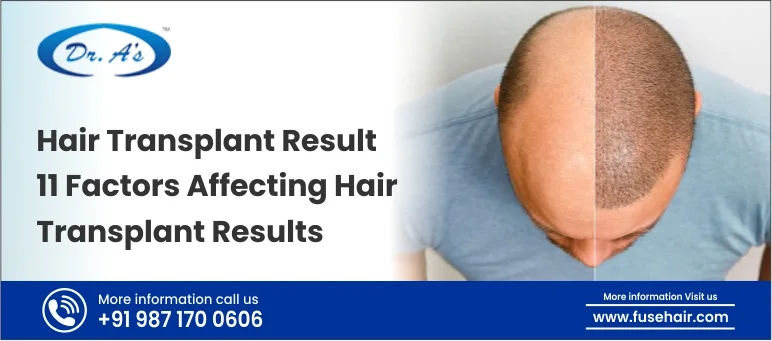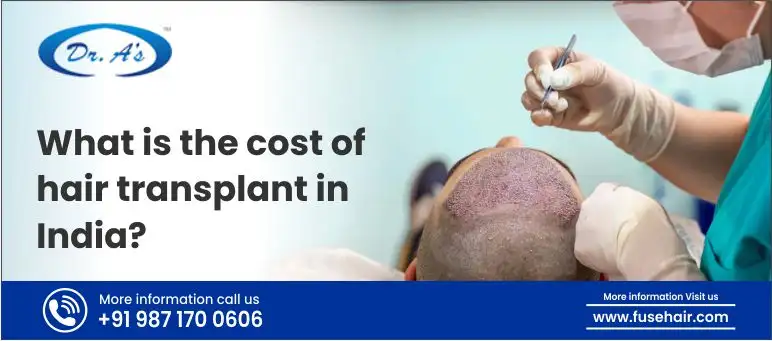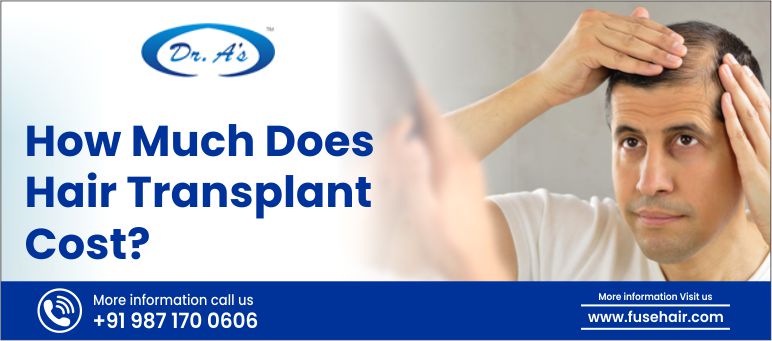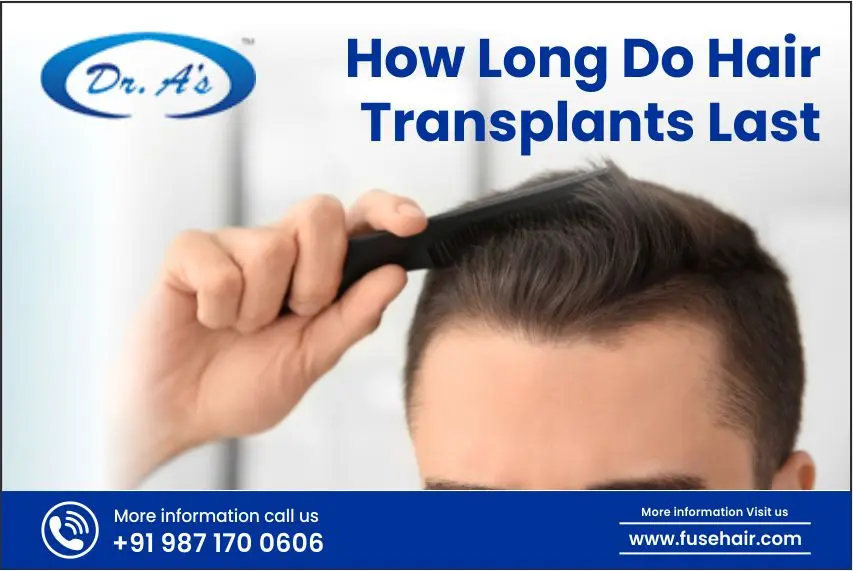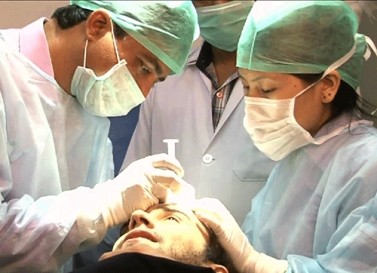
Hair loss is so much more than a cosmetic concern. It has a heavy impact on a person’s confidence and self-esteem, as well as their emotional well-being. Male pattern baldness is the most common among different kinds/ patterns of hair loss. It is a predictable progression measured by the Norwood scale. People experiencing stage 6 of hair loss may feel deeply impacted and require professional help.
Dr. A’s Clinic is a top choice for hair loss treatment in Delhi for patients with stage 6 male pattern baldness. Our founder, Dr. Arvind Poswal, is a renowned hair transplant surgeon who has helped patients recover from various cases of pattern baldness. So, if you’re suffering from stage 6 hair loss, consult us today.
Understanding The Norwood Scale
The Norwood Scale is an important tool to understand male pattern baldness. It was developed by Dr. O’Tar Norwood in the 1970s. The scale gives a clear framework to categorize the degree and pattern of hair loss. It helps both the patient and doctors communicate clearly about the condition’s severity. Treatment can then be planned accordingly.
It begins at Stage 1, which shows little or no hair loss. The scale progresses through various phases of hair thinning and recession. The early stages mainly affect the hairline and the temples. When hair loss advances, it spreads to the crown and the top of the scalp. Large bald areas on the top and the front emerge in stage 6 of hair loss. It leaves only a narrow band of hair around the sides and the back.
You need to understand where you fall on this scale to know the choices you have in treatment, as well as how successful they will be. The extent of hair loss shall determine your course of action from here on out. When baldness becomes extensive, surgical options like hair transplantation may be needed.
What Happens In Stage 6 Hair Loss?
Here is what happens in stage 6 hair loss:
-
Visual Characteristics
Stage 6 hair loss presents with distinct and noticeable features. At this stage, the frontal hairline has receded remarkably. The bald area on the crown or the top back part of the scalp has expanded, too. The thin band of hair that previously separated the front from the crown will now almost entirely be gone. This results in a large and connected bald patch that covers the majority of the scalp’s top surface.
Hair on the sides and back usually remains, but it also tends to thin out. The remaining hair forms a horseshoe-shaped fringe around the bald top. You can also see the scalp in the bald areas clearly. This area may naturally be sensitive to sun exposure and loss of hair protection.
This visual change is dramatic for many. It can lead to feelings of self-consciousness or frustration in many cases. Understanding these signs helps you realize the extent of your hair loss and take informed steps.
-
Rate Of Progression
The speed of progression to stage 6 varies from one person to another. Genetics plays a major role. In other cases, some other factors may influence how quickly hair loss advances. Some men may take a decade or two to reach this stage. Others might progress faster, in just a few years.
Hormonal factors, like fluctuations in DHT levels, are a big influence. Lifestyle choices like diet and stress management can either speed up or slow down this process. The same goes for environmental exposures. It is important to track hair changes over time to pinpoint the rate of progression. This way, you can decide on treatment urgency.
Causes Behind Stage 6 Hair Loss
Here are some of the key causes of stage 6 hair loss, as suggested by Dr. Arvind Poswal:
-
Androgenetic Alopecia
Androgenetic alopecia is the main cause behind stage 6 hair loss. It is also called male pattern baldness. This is a hereditary condition that involves sensitivity of hair follicles to DHT. This causes shrinkage of hair follicles, which in turn causes shorter and thinner hair.
This hormonal influence is why hair loss has a predictable pattern. It first affects the temples and the crown, before expanding as the follicles become progressively weaker.
-
Hormonal Factors
Beyond genetics, a balance of hormones in the body can also affect hair loss. Elevated DHT levels are a primary driver. Other hormones, like thyroid and stress hormones, indirectly affect hair follicle health. Hormonal changes during ageing and illness, or even medication, can also trigger/ worsen hair loss.
Environmental And Lifestyle Accelerators
External factors can also accelerate the hair loss process. Chronic stress raises cortisol levels. This leads to hair thinning or shedding. Poor nutrition or nutritional deficiencies reduce hair follicle health to a great degree. Smoking further decreases blood circulation, which starves follicles of oxygen and nutrients.
Exposure to pollution and harsh hair care products further damages the scalp. Managing these factors is important if you wish to slow the progression of hair loss.
How To Confirm You Are In Stage 6?
Here is how you can confirm if you are in stage 6 of hair loss:
-
Visual Self-assessment
You can start by observing your scalp carefully. Look for a large bald patch on the top of your head. This may connect to the frontal and crown bald spots. Check if the thin band of hair that used to separate these areas has disappeared. Compare your scalp to reliable images of stage 6 hair loss photos on the Norwood scale. Notice if there is any thinning around the sides and back as well.
This is only an initial self-assessment. It shall help you know if you are in an advanced stage of hair loss. It is still not a definitive way, but it is a good start.
-
Consulting A Hair Transplant Surgeon
You need an accurate diagnosis and treatment advice regarding your hair loss. So, consult a hair transplant specialist as soon as possible. Dr. Arvind Poswal is a leading expert in hair restoration and care. At Dr. A’s Clinic in Delhi, he provides comprehensive consultations, during which he performs an extensive hair density analysis to assess your scalp condition with accuracy.
Dr. Poswal has a detailed approach where he takes into account your medical history and hair loss pattern, along with donor hair availability. He also prioritizes your personal goals before recommending a treatment plan. Professional evaluation is very important if you are seeking an effective approach to hair loss.
Treatment Options For Stage 6 Hair Loss
These are some of the most effective treatment options for stage 6 hair loss:
-
Non-surgical Options
Stage 6 hair is advanced, but some non-surgical treatments prove useful. They can help slow the hair loss down and improve existing hair quality.
-
Minoxidil
Minoxidil is an FDA-approved topical medication. It stimulated blood flow to the hair follicles. It also extends the growth phase and promotes thicker hair. Applying minoxidil every day proves more effective in the early stages.
However, it can also complement your treatment of stage 6 hair loss. It may take several months to see results with this medicine. Consistent use is important to maintain benefits.
-
Finasteride
Finasteride is a prescription oral medication. It inhibits the 5-alpha reductase, which is an enzyme that converts testosterone to DHT. Lower DHT levels reduce follicle miniaturization and hair shedding. The use of finasteride and minoxidil together creates a stronger defense against hair loss.
-
PRP Therapy
Platelet-Rich Plasma (PRP) therapy is an innovative treatment. Here, your own blood is drawn and processed to concentrate platelets. It is then injected into the scalp. These platelets release growth factors to stimulate dormant follicles and improve hair thickness.
We at Dr. A’s Clinic offer customizable PRP therapy sessions that utilize the latest technology. Patients see improved hair density and texture after the procedure. This is applicable to even advanced hair loss cases.
Hair Transplant Surgery
Non-surgical treatments are insufficient on their own. Hair transplant surgery options can help restore lost hair and improve your appearance significantly. These are the top options:
-
FUT (Follicular Unit Transplantation)
FUT involves the removal of a thin strip of scalp from the back of the head. It is then dissected into individual follicular units. They are transplanted into the bald areas of the head. This procedure can harvest several grafts in a single session. However, it may leave a linear scar that may be visible with short hairstyles.
-
FUE (Follicular Unit Extraction)
FUE extracts individual follicular units directly from the donor area using small punches. It does not leave behind a scar and ensures faster healing. However, this procedure yields fewer grafts per session.
-
FUSE (Follicular Unit Separation Extraction)
FUSE is an advanced method that brings together the best of both FUT and FUE. It is Dr. Arvind Poswal’s pioneering technique that ensures hair restoration even when you lack donor hair on the back of the head. In this method, hair can be harvested from other parts of the body, such as the abdomen, back, chest, armpits, beard, etc. Thus, it is most suitable for patients with as severe as stage 6 hair loss.
The procedure carefully separates follicular units to maintain graft quality while extracting them less invasively. This method balances graft quantity and natural results. It also has minimal scarring, and you can recover much faster. We at Dr. A’s Clinic exclusively provide this premier technique that helps stage 6 hair loss patients achieve durable, natural-looking outcomes.
Can Stage 6 Hair Loss Be Reversed?
The full reversal of stage 6 hair loss is usually unlikely. This is because many follicles are now already permanently inactive. However, significant improvement is still possible. The right combination of medications and hair transplant surgery restores hair density. This combination can even slow further loss.
Early diagnosis and treatment for stage 6 hair loss increase your chances of success. Many patients experience renewed confidence and satisfaction upon receiving professional intervention.
Conclusion
Stage 6 hair loss is an advanced form of male pattern baldness. It is characterized by large bald areas and reduced hair density. It comes with its own set of challenges, but understanding where it lies on the Norwood scale and its causes can help you seek effective solutions.
Individuals with stage 6 hair loss can seek medical help at Dr. A’s Clinic, where Dr. Arvind Poswal provides the best hair transplant in Delhi. The use of advanced techniques, like PRP and FUSE, can help you restore hair with confidence, even at later stages.











